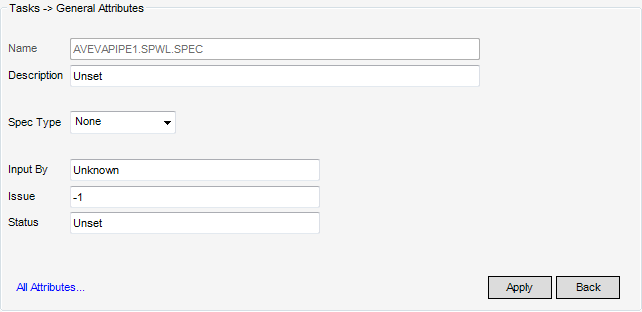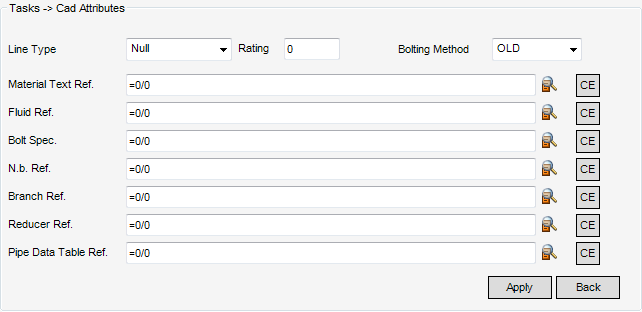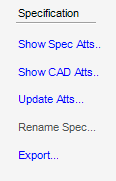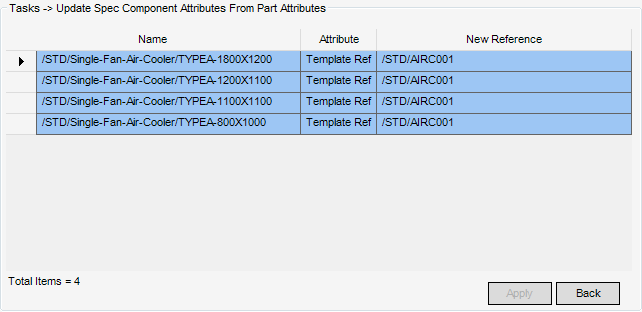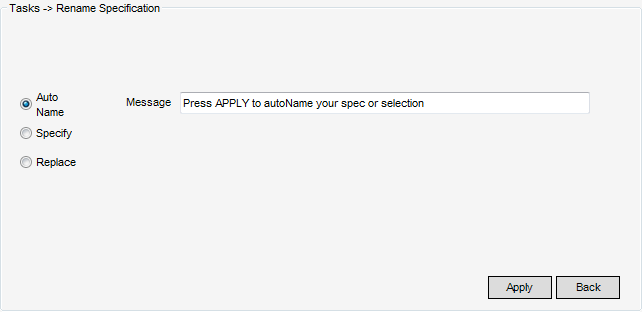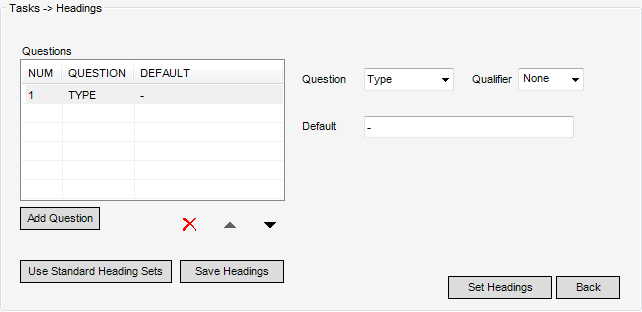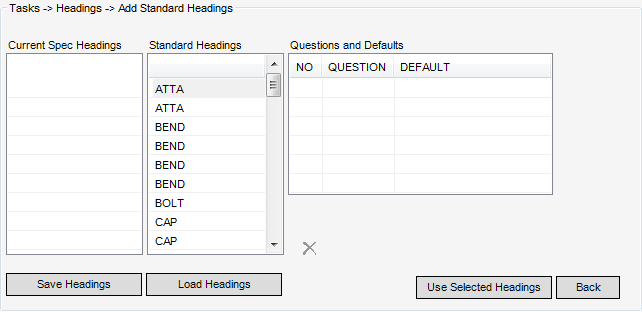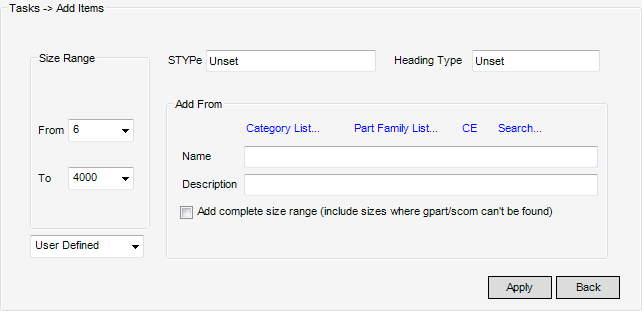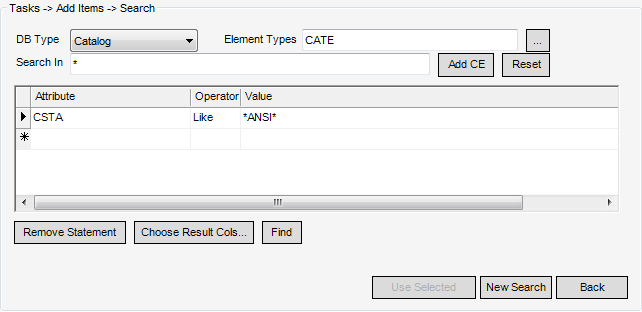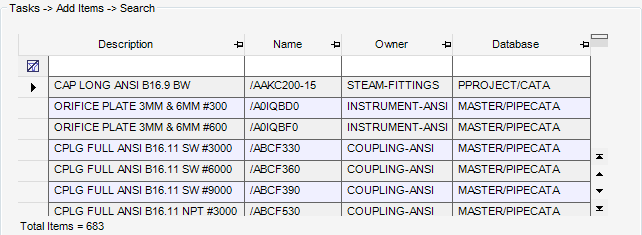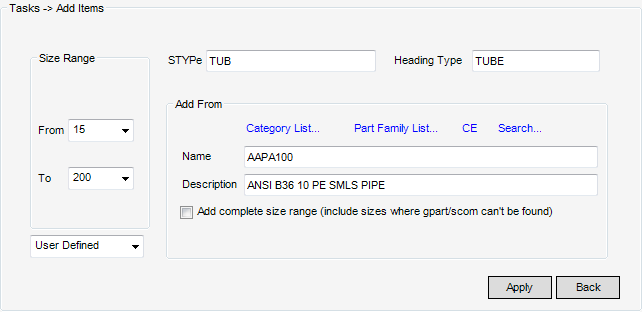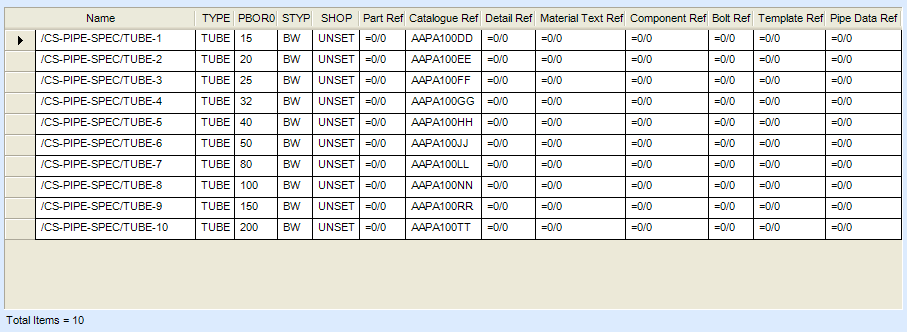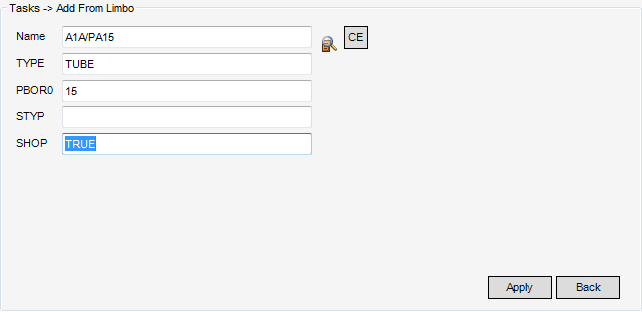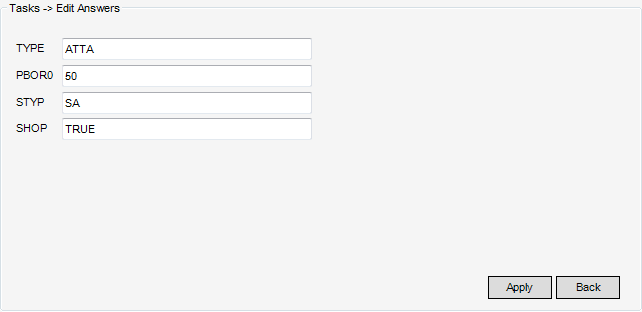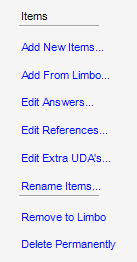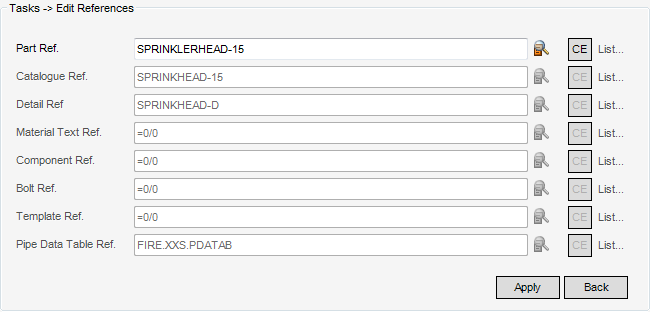Catalogues and Specifications
User Guide
Specifications : Setting Specification Attributes
The Specification window contains a set of ‘Tasks’ sub windows which allows the modification of the attribute values of the SPEC element created in the Catalogue DB and create the appropriate sub elements using an intuitive interface.
From the Specifications part of the Tasks sub window, click Edit Spec Atts to display the General Attributes sub window.
In the Description field enter an appropriate explanation of what the specification is to be used for.
In Spec Type select a value from the drop-down list:
In the Input By field enter the name of the administrator creating the new specification.
In the Issue field enter an issue number.
In the Status field enter any additional tracking information that may be useful for identifying the status of the specification.
In the Catalogue Explorer locate the elements created in the database hierarchy, click CE to pick the Spec Tables from the Catalogue Explorer and bind them to the Cad Attributes window.
Alternatively click on the search icon to the left of CE to conduct a search in the Catalogue DB for the appropriate tables.
Once the spec tables have been bound to the references to the Cad Attributes window. They can be accessed with the use of the links available for selection in the Tables part of the Tasks sub window.
However, if the part's reference attributes are subsequently modified, the specification component's references will no longer match the part's references. To correct this, select Update Atts to display the Update Spec Component Attributes From Part Attributes sub window.
Clicking Apply updates the selected attributes and removes them from the list.
To rename a specification, from the Specification part of the Tasks sub window, select Rename Spec to display the Rename Specification sub window.
By default Auto Name is selected and a message is displayed to prompt you to Press Apply to autoName their spec or selection. Doing so, renames the specification with the next incremental auto number value (for example spec/005 is renamed spec/006).
To enter a specific name for the specification, click Specify, enter a new name in the Specify field.
Click Replace to replace part of the specification name with a new string. Two input fields Replace and With are displayed. Enter the required text into the two fields.
In each case click Apply to commit the change.
To export the current specification to an output file which can be used later in a macro to import the specification into a project. Click Export to display a standard windows file browser named Export to Specon Output file.
|
•
|
TYPE is the generic type (GTYPE) of the component represented by an SPCOM.
|
|
•
|
NAME is the unique identifier for each SPCOM.
|
Refer to Catalogue Database Structure for further information.
Use the Headings window to build the Headings row of the new Specification.
The Questions table to the left of the window lists all the current heading columns of the Specification.
To change a Question type; highlight a row in the Questions table and select a new value from the Question drop-down to the right of the table. The available Question types are as follows:
When dealing with a PBORE, a Qualifier can be either a null value or a numeric value from 0 – 9, change the value by selecting a value from the Qualifier drop-down to the far right of the window.
Click Save Headings to commit changes.
Click Back to return to the Tasks sub window.
From the Add Standard Headings sub window, it is possible to pick from pre-defined headings.
Upon selection of the required Standard Heading the right hand Questions and Defaults list will be populated with appropriate questions.
Click Use Standard Headings to commit changes.
After creating the main column headings for the specification, parts can be retrieved from the Catalogue with the use of the Add New Items window.
From the Items parts of the Tasks sub window, click Add New Items to display the Add Items sub window.
The Add Items window is used to retrieve the Answer part of the Question.
In the Size Range group select a from and to value (minimum size and maximum size) from the drop-down lists. These values are constrained by the spec tables selected in the CAD Atts window.
Use the Stype and Heading Type fields to enter a valid sub type and GTYPE value, this will be used in the Specification heading (but not as part of the Question).
The Add From group allows you to select a CATEgory or Part Family window within the Catalogue database where the specification is to locate the desired parts.
The Search window displayed is a generic search facility, it is pre-populated with an appropriate criteria designed to return valid top level Catalogue elements.
It is recommended to click Find without changing any of the search criteria. However if experienced it is possible to adapt the search if more than one Catalogue databases are present in a project, refer to Search for further information.
After clicking Find a list of results are displayed which can then be filtered further if required.
Highlight an entry in the list of results and click Use Selected, this returns to the Add Items window and pass through the selection to the Add From group in the Add Items window.
If both PBOR1 and PBOR2 are used in the heading, the option Add All PBOR1 and PBOR2 sizes appears on the window. If this box is checked, all possible components sizes are added to the specification. If this box is not checked, then only components with PBOR1 greater than PBOR2 are added. An equivalent option appears if PBOR1 and PBOR3 are used in the heading, the only difference being that if it is not checked, only components with PBOR1 greater than or equal to PBOR3 are added to the specification.
Click Apply to now run the Question query on the Catalogue database on all elements below the selection made in the Add From group. The results are formatted with the headings specified in the Add Heading window.
Click Back to return to the Tasks window.
To move a specification component from a limbo specification to the current heading, click Add From Limbo, the Tasks Add From Limbo sub-window is displayed.
|
•
|
Type an appropriate name into the Name field
|
|
•
|
Click the search icon then use the generic search facility (refer to Search for further information).
|
For example: from the form above, the STYPE must be entered. Click Apply to add the component to the specification or click Back to return to the Tasks form.
Once a piping specification has been created the columns containing references can be edited. Click Edit References to display the Edit References sub window.
Click List to the right of Detail Ref displays a list of detail texts. The list can be filtered using the standard filter tools provided in grid tables.
If user defined attributes (UDAs) have been defined for specification components, they can be edited by selecting one or more components and then clicking Edit Extra Uda's.
The UDAs for the components are displayed in the Edit User Defined Attributes sub window and can be edited by typing directly into the text fields.
For reference attributes, a search icon and CE button are also displayed, which behave in the same way as for editing normal reference attributes. The Edit User Defined Attributes sub window supports editing of integer, logical, real, text, reference and word user attributes.
The Rename Items window provides the same functionality for Items as that available in the Renaming a Specification window.
Click to highlight an item in the list then click Rename Items. Refer to Renaming a Specification for a detailed explanation.
Select Delete Permanently to remove the selected item from the specification.


